The dying bees of Syria
Beekeeping is an ancient tradition in Syria, where native bees used to produce world-famous honey. But decades of intensive farming, economic hardship and environmental degradation have shattered the delicate relationships that once united bees and humans.
28 September 2022
QAMISHLI — Wrapped in a colorful veil, Ghalia bustles about the courtyard of her house in the village of Himo, on the outskirts of the city of Qamishli in northern Syria, holding a near-empty bucket of honey. All that remains of last year’s harvest are a couple of spoonfuls, which she insists on sharing with her guests.
For the past 45 years, Ghalia has kept bees—building hives out of wood or clay, feeding them water and medicine in hard times and harvesting their honey. But a few months ago, a mysterious calamity swept away her bees. One after the other, 13 of her 16 hives fell silent, filled with the corpses of dead insects.
“All these are dead,” the elderly beekeeper says, pointing towards rows of round hives stacked under a small garden shack. Only three still buzz with the hum of honeybees. A handful of insects flurry in and out of a small rectangular mouth carved into the dry mud walls. But even these survivors, Ghalia says, seem dazed and sick.
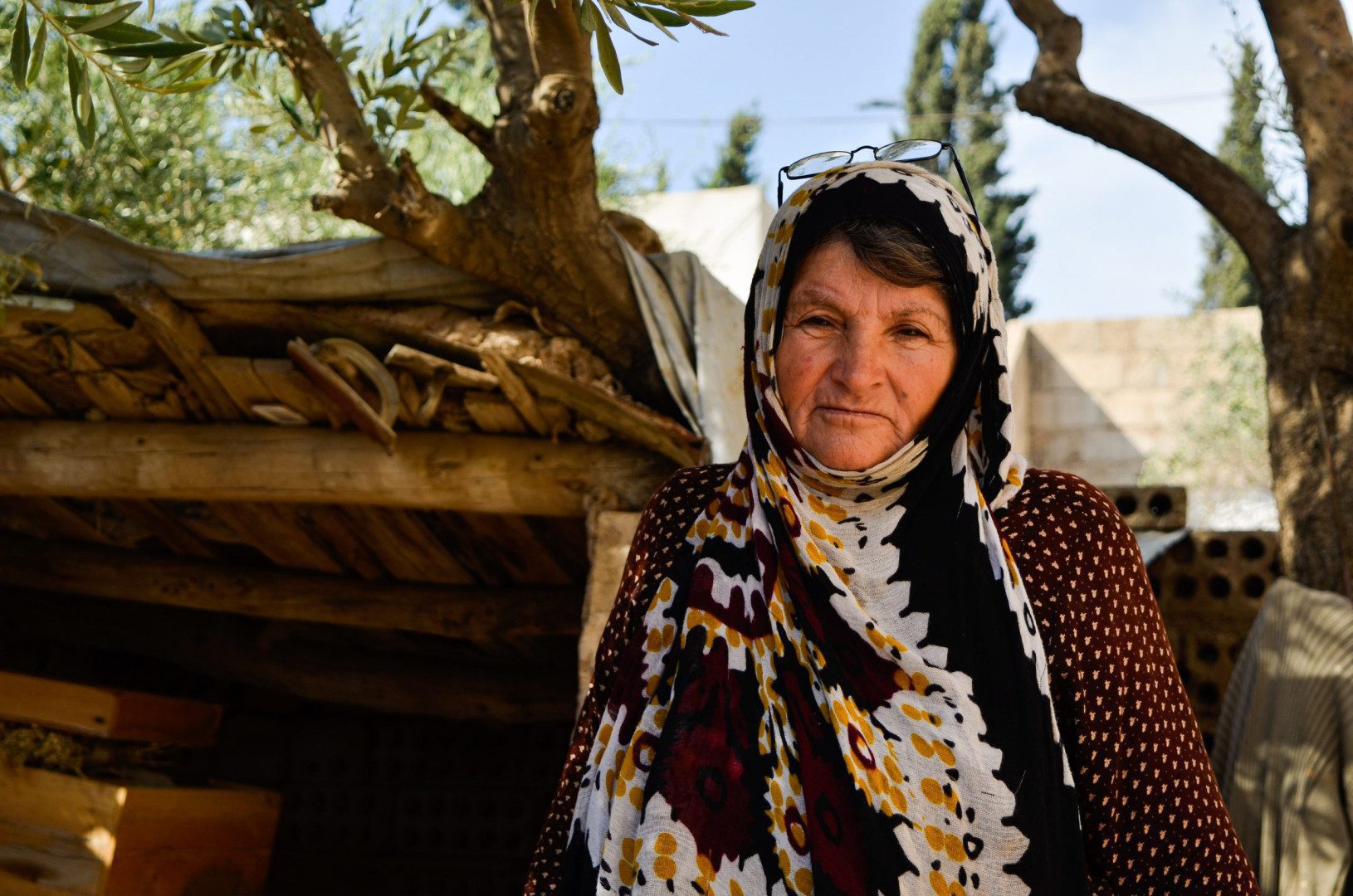
Ghalia stands in the courtyard of her house in the village of Himo, 22/09/2022 (Lyse Mauvais/Syria Direct)
Ghalia can only speculate about what happened to her bees and to those of her neighbor, Ahmad, who lives two streets away. She believes pesticides spread by the municipality or the local authorities’ Department of Agriculture this past summer are to blame. She would like to file a complaint, but does not know where to turn for help.
Her story echoes that of many Syrian beekeepers, watching powerless as mysterious afflictions and insidious poisons sweep away their bees. In northeastern Syria, the country’s agricultural heartland, “bees often die here in great numbers—thousands of bees dying at once,” says Ali Yousef, an agricultural engineer working for the Syrian government. He asked to be referred to by a pseudonym because he is not allowed to speak to the media.
A passionate apiarist himself, Yousef frequently advises local beekeepers. “Many call me because their bees are dying in the thousands, wondering what they should do,” he says. The causes? Too many to count. “Bees are a sign of environmental health; when bees are well, nature is well.”
But Syrian nature is, by all accounts, very unwell. The country’s northeast is arguably among the most polluted places on earth: its countryside dotted with hundreds of oil wells and refineries, its cities powered by thousands of private generators running on low-quality diesel, its air thick with the scent of fuel.
For thousands of years, Syria’s orchards and fields have been pollinated by the native Syrian honeybee (Apis mellifera syriaca), a gentle, sturdy insect well-adapted to the local environment and resistant to drought.
But in Syria, and across the world, bee populations are collapsing. Everywhere, widespread pollution, plummeting flower diversity and excessive pesticide use are driving them towards extinction. In Syria, climate change and environmental crises borne out of the Syrian conflict—rampant pollution from the destroyed energy sector, economic hardship pushing beekeepers out of the trade and a dearth of environmental regulation—are making matters even worse.
Viewed from the perspective of the deep human suffering caused by years of war in Syria, bees may seem a minor concern. But the future of Syria’s bees is intertwined with that of humans, who stand at the top of complex ecological food pyramids in which these insects play an unseen, but irreplaceable, role.
A threatened legacy
Syrians are the heirs of millennia-old beekeeping practices. Historians suspect that, like agriculture—born in the floodplains of Mesopotamia, between the once-mighty Tigris and Euphrates—early forms of beekeeping first emerged in Syria and Iraq. In the nearby Jordan valley, archaeologists have unearthed 3,000-year-old terracotta hives that closely resemble the handmade hives shaped from hay and mud still used in Syria today.
Yousef’s face brightens as he delves into his favorite subject, bees. He describes the complex life of a colony, the patience and minute science required to identify the most productive “queens” to reproduce successful hives. Yousef raises native Syrian bees, famed for their gentleness, as well as bees imported from Germany and Italy, which are considered more productive. “I spend so much time with the bees that my wife is jealous of them,” he says jokingly.
Then, his face darkens. “The situation of bees has worsened in recent years and particularly over the past two years, due to the lack of forage,” he says.
Caught in the grips of a historic drought, Syria has witnessed two consecutive years of failed harvests that left people, cattle and bees scrambling for food. “I used to harvest two or three kilograms of honey per hive, when the spring was good. But for the past 10 years, I’ve collected it just once a year,” Ghalia regrets. “People used to plant lots of vegetables. There were flowers, poppies and cotton around. But now there is much less rain than before.”
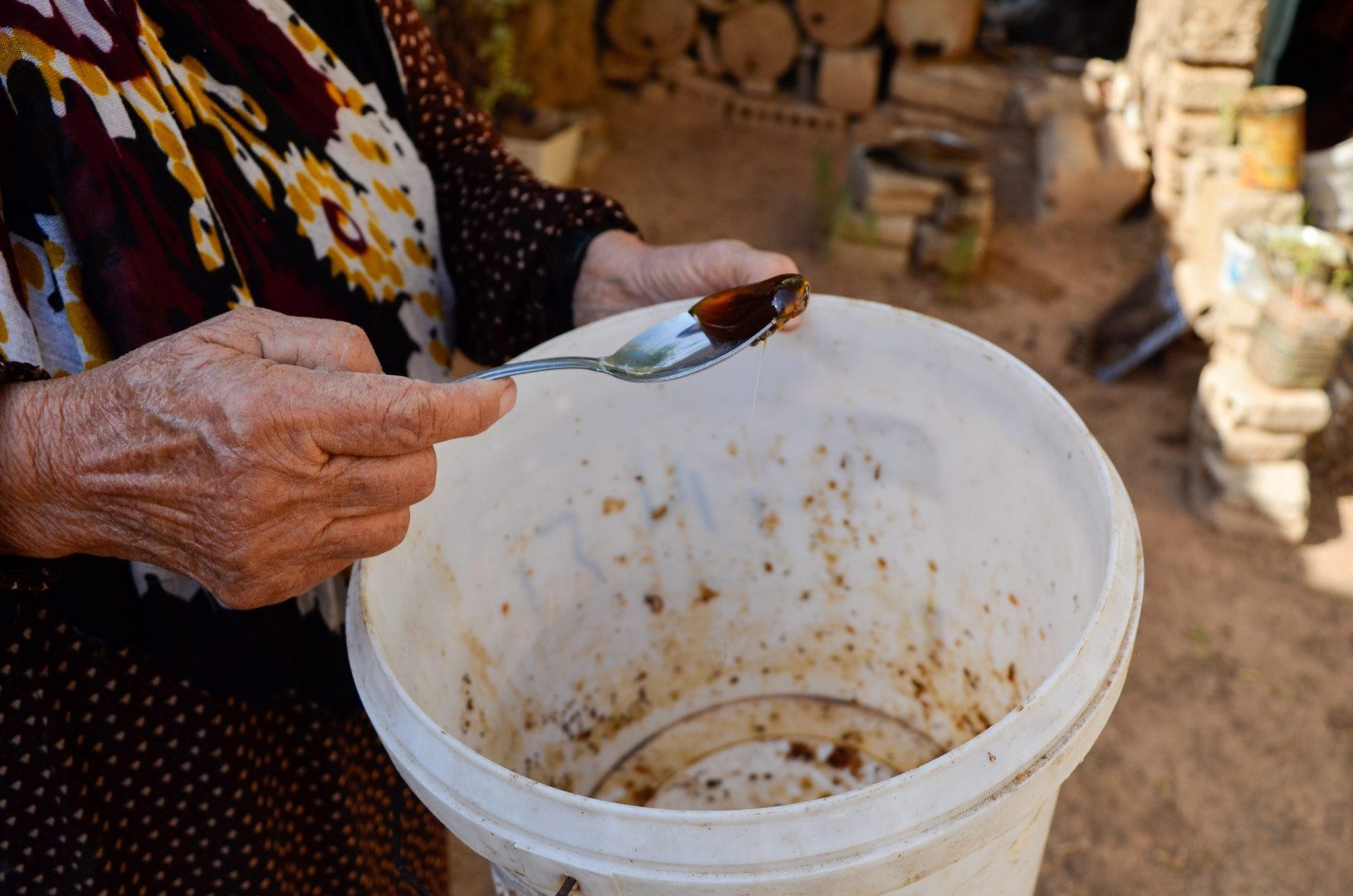
The last spoonful of Ghalia’s last honey harvest, 22/9/2022 (Lyse Mauvais/Syria Direct)
But drought and crop loss alone are not to blame. Global bee populations began to decline decades ago as humans adopted increasingly intensive farming practices. Throughout the 1980s, to develop Syria’s agricultural potential and achieve a degree of self-sufficiency, Damascus encouraged farmers to purchase tractors and expand their fields, sowing vast swathes of the country with a handful of crops: cotton, wheat and barley. This was hardly friendly to bees, who need a variety of different flowers around to feed throughout the entire summer and spring.
But the biggest blow to the world’s bees was the 20th century discovery of synthetic chemicals and their life-killing properties, which were quickly applied everywhere to control pests, diseases and undesirable insects proliferating on monoculture farms. These were sprayed liberally, in Syria and elsewhere, with little thought for long-term consequences and effects on surrounding communities.
“A long time ago, before the war, the Syrian government sent a plane over our fields to spray pesticides,” says Ahmad Muhammad, a 70-year old beekeeper in Himo. Although the spraying took place kilometers away, all 35 of Muhammad’s bee colonies were exterminated, too.
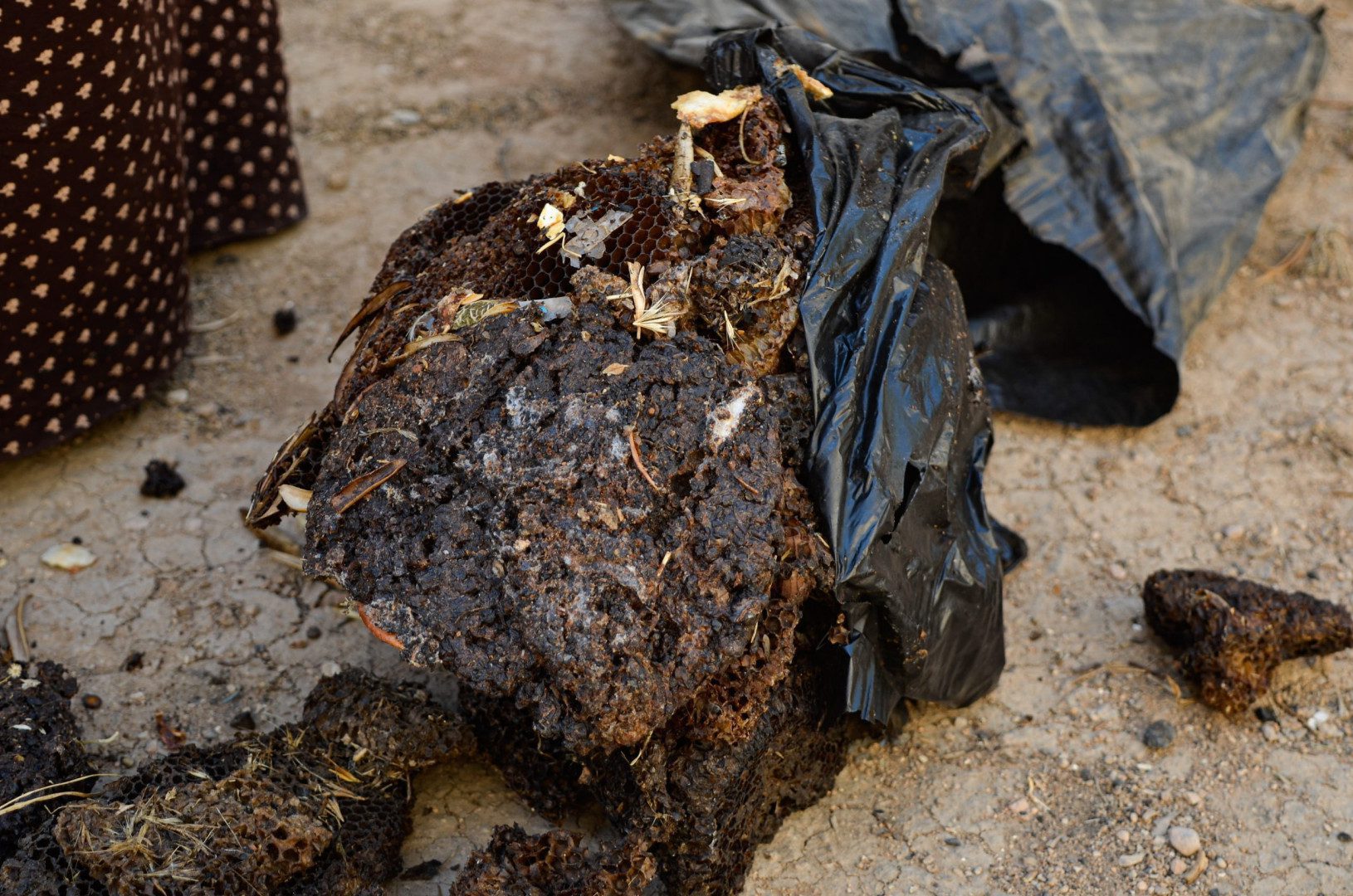
Ghalia plans to extract natural wax from this dead hive, to be used in ointments and skin treatments, 22/9/2022 (Lyse Mauvais/Syria Direct)
Drifting in the air, seeping through the soil and water, the synthetic chemicals that make up pesticides and herbicides spread well beyond the area where they are initially applied. Their long-lasting toxic properties accumulate in the body of all living things, including humans, poisoning them slowly over time. Carried into the hive by bees, some find their way into honey.
This is also true of pollution, a serious issue in northeastern Syria, where oil is abundant but infrastructure to minimize the impact of extracting, refining and transporting it is scarce. “There are a lot of informal oil refineries and oil wells, and a great number of generators running on mazot [a cheap, low-quality type of locally refined diesel],” Yousef says. Finding a suitable place with clean water, clean air, plenty of flowers and away from pollution sources has become a challenge.”
The decline of beekeeping
Understanding wild bees’ incredible productive potential, humans began domesticating them thousands of years ago, building large hives to encourage the growth of colonies, placing them near flower-filled fields and orchards and feeding the insects in bad times. In turn, bees thank their keeper with the product of their work. They spend the spring and summer months scouting for flowers and gathering pollen to make honey. Beekeepers also draw other products from the hive, such as beeswax, propolis, raw pollen, or royal jelly.
“In the Jazira region [the northeasternmost part of the territory ruled by the Autonomous Administration of North and East Syria (AANES)], I don’t think there are many wild bees left, because the landscape is very dry and bare,” Luqman Bader, the co-director of the Directorate of Forests and Reserve at the Board of Agriculture of the Jazira Region, an administrative division of the AANES, told Syria Direct.
Scattered in villages across the region, family-owned hives and small-scale beekeepers therefore play a tremendous role in sustaining the presence of bees. “In my youth, there were a lot of families keeping bees in the village,” Ghalia remembers. “A lot of women, in particular, because they were spending the day at home and had time for the bees.”
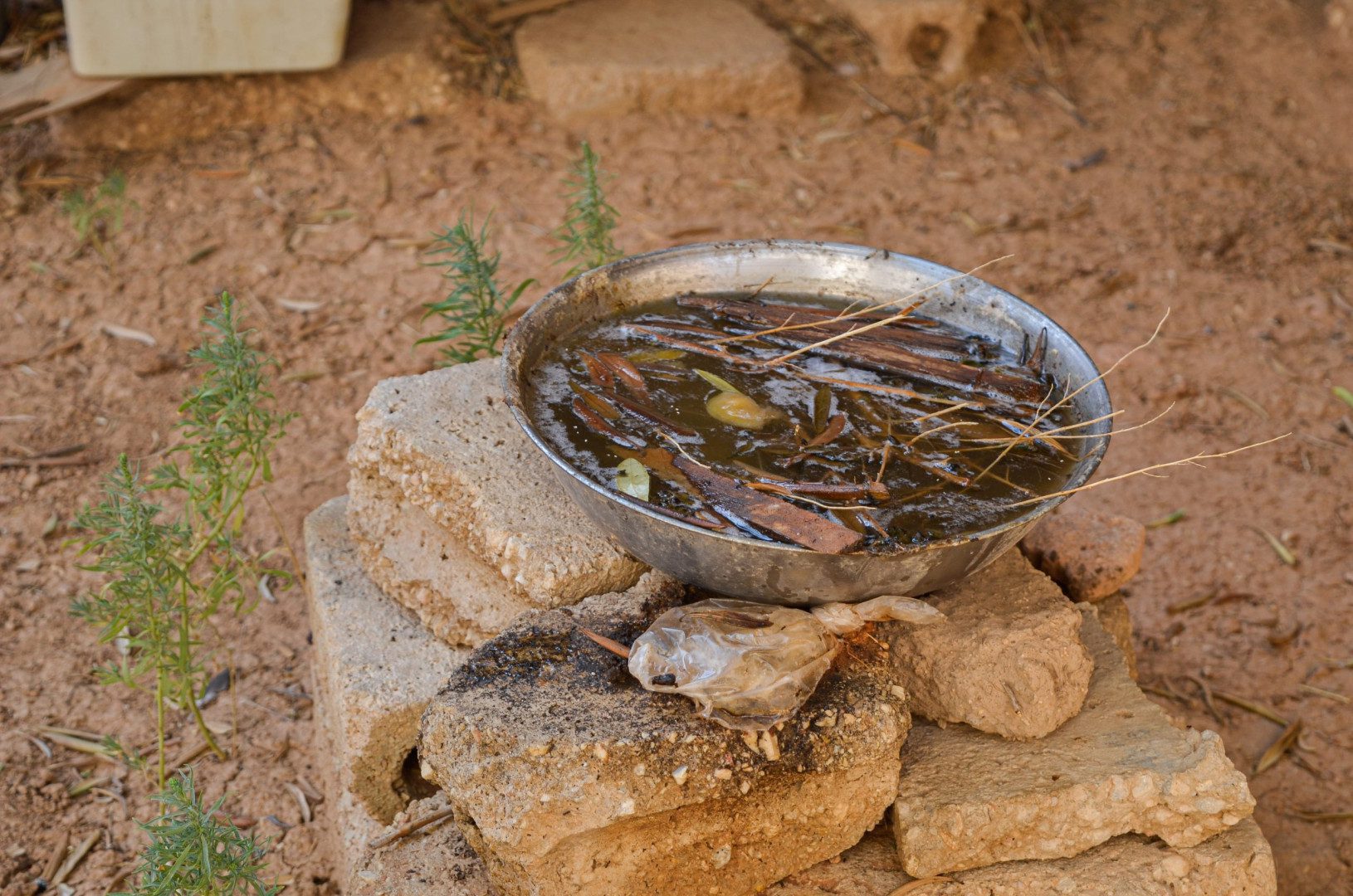
Ghalia leaves out a bowl of water for her bees, filled with sticks to prevent the insects from drowning, 22/9/2022 (Lyse Mauvais/Syria Direct)
But both large and small-scale beekeeping declined over the course of the war in Syria, mostly due to economic hardship. Syrian government data from 2002 recorded more than 15,000 professional beekeepers across Syria, caring for over 365,000 hives and producing over 1,750 tons of honey per year. An article published in a specialized publication that same year highlighted that, due to its high quality, Syrian honey was sold for prices above world average, ranging from 7 to 24 euros per kilogram (the equivalent of $13 to $43.50 today, adjusted for inflation). It was readily exported to Lebanon, Jordan or Gulf countries.
“Before, a good beekeeper could recover the initial investment within a single year, given the high price of honey and the productivity of bees,” Yousef says. “Now, a modern hive costs around $40, to which you must add the cost of wax frames, the cost of transporting the hives to the field, and the labor force.” Public sector wages in Syria ranged between $20 and $40 per month as of August 2021.
“Modern” Langstroth hives are made of a wooden box filled with replaceable frames on which bees build wax cells filled with honey, which the farmer can easily access throughout the year. Historically, Syrian beekeepers relied exclusively on traditional hives, made of wood or of mud and hay. These hives are less productive, cannot be opened to check on the bees and must be broken into at the time of the harvest. But in current conditions, they are making a comeback: unable to afford wood, Ghalia learned to make mud hives seven years ago, and has been using them ever since.
With borders closed or restricted due to the war, many Syrian beekeepers have also found themselves wholly dependent on the domestic market, where honey has become a luxury. “People’s economic situation doesn’t allow them to buy honey,” Yousef says. He sells one kilogram for $20, which is unaffordable for many customers.
The quality of honey has decreased, too. To save their starving bees during periods of drought, beekeepers increasingly feed them sugar water as an alternative to flower nectar and pollen. “Honey contains many natural components including sucrose, fructose, glucose, enzymes… But feeding them sugar instead of pollen gives a sugar-filled honey that loses many of its benefits,” Yousef says. “The proportion of sucrose in honey can go from two percent normally up to 50 percent if bees are fed with sugar.”
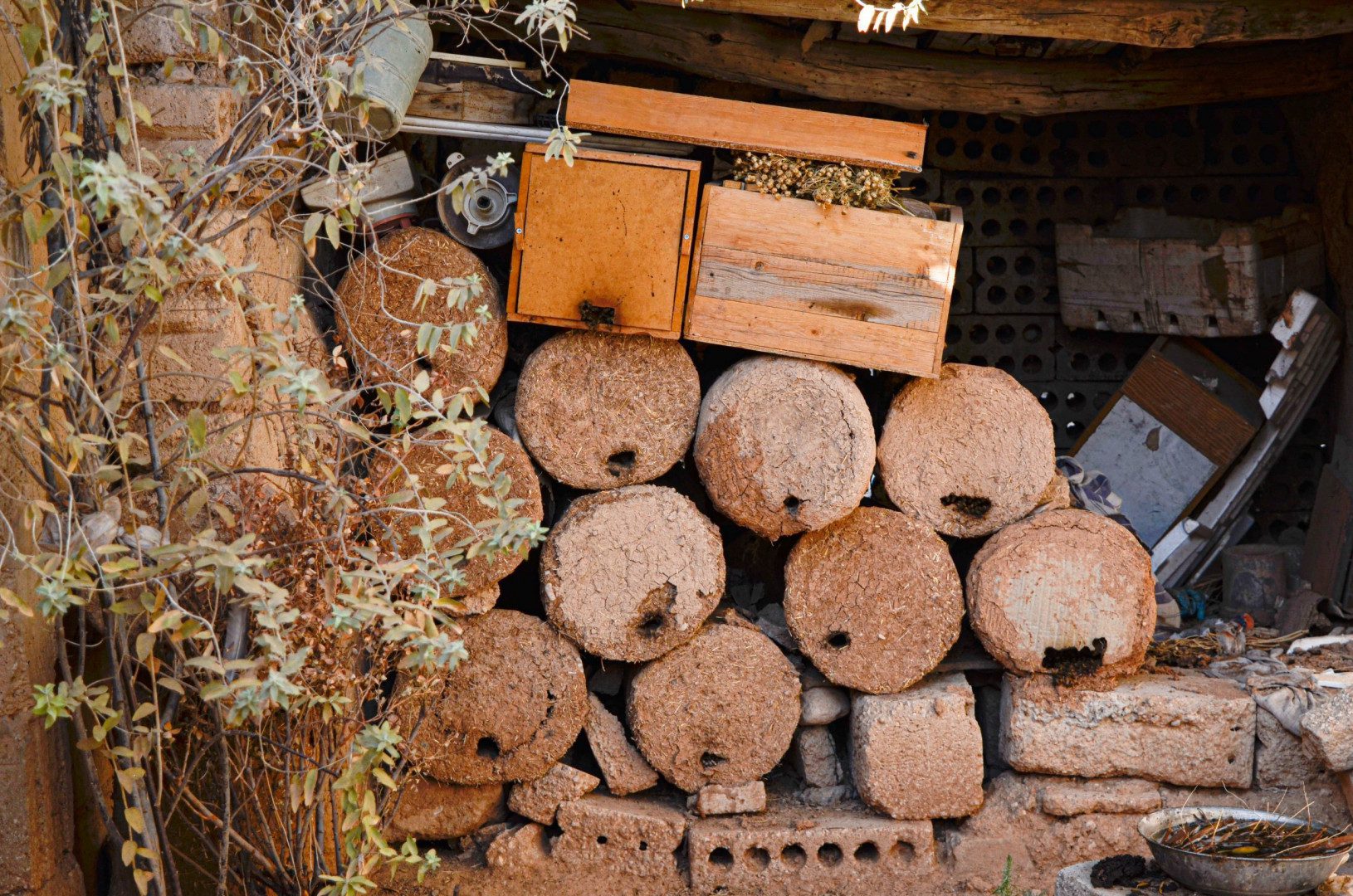
Some Syrian beekeepers still use handmade hives built with hay and mud, 22/9/2022 (Lyse Mauvais/Syria Direct)
Flowers and farms
Beyond beekeepers’ livelihoods, the decline of Syrian bees unfortunately affects the entire ecosystem they are part of, including local farmers.
Bees spend their entire lives roaming among flowers to collect nectar and pollen, which they eat and turn into sweet honey. Hovering from one flower to the next, they carry pollen from plant to plant in a process known as pollination. This pollen, which is part of a plant’s reproductive system, enables the flower to grow into a seed and fruit. Around 35 percent of the world’s food crop depends on pollinators like bees. Without them, many of the plants we grow and foods we eat would not exist.
“Having bees near the fields increases agricultural yields by 30 to 40 percent on average thanks to pollination,” according to Yousef, but beekeepers struggle to find land for their apiaries. “We always try to convince farmers to let us bring our bees onto their land,” he says. “But many are not conscious of the enormous advantage provided by bees.”
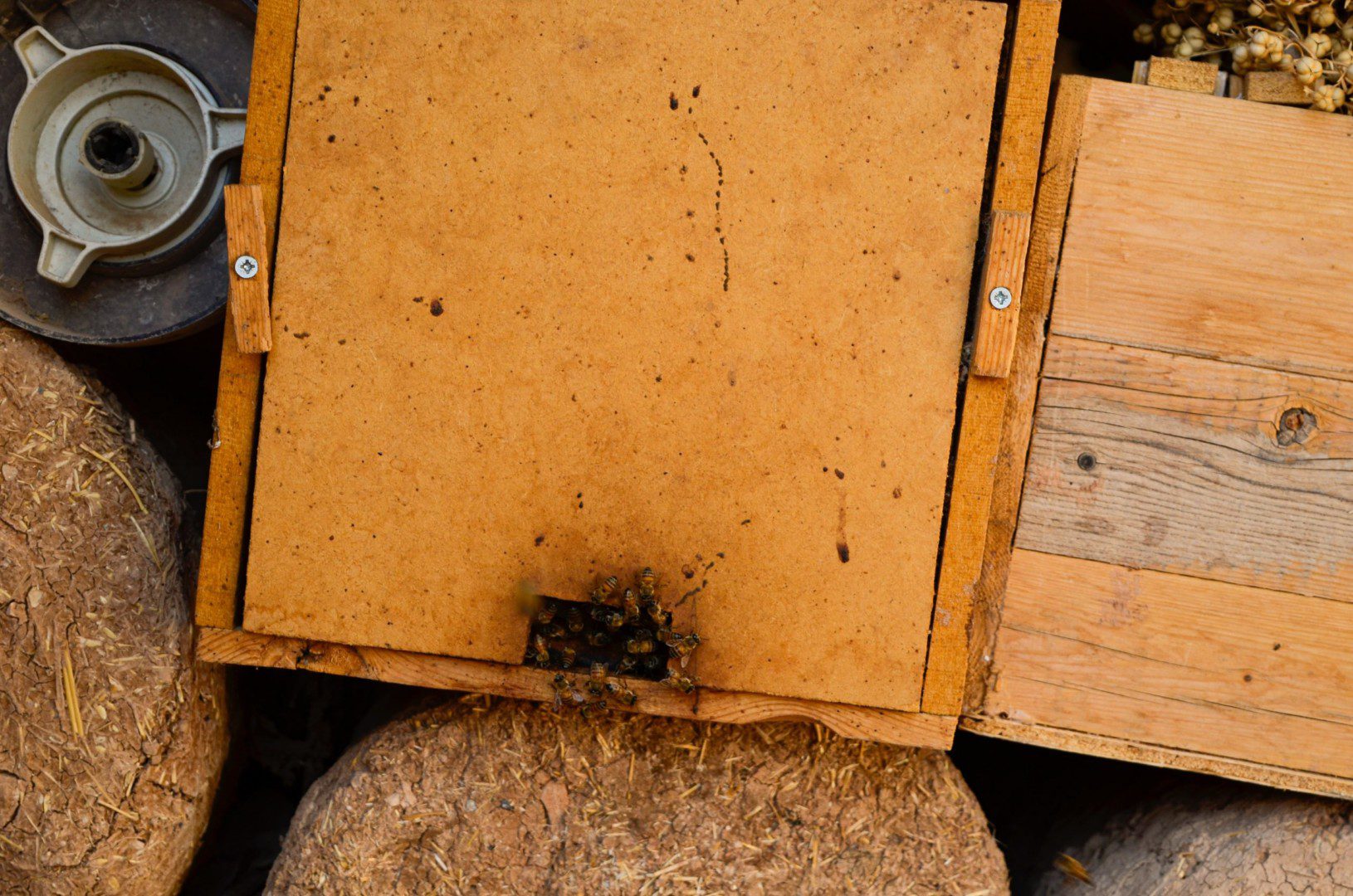
A wooden beehive in the village of Himo in northeastern Syria, 25/9/2022 (Lyse Mauvais/Syria Direct)
In 2019, the AANES launched new initiatives to support large-scale beekeeping. Bee farms meeting certain criteria—including owning more than 50 modern beehives and having a long-term business plan—can register with the local Directorate of Forests and Reserves to receive support. They can apply for special authorization to transport their hives around the region, and access to land located on AANES-managed forests and nature reserves, where the bees can feed. Over the past year, nine large bee farms, containing 500 to 2,000 hives, signed up.
Farmers could also play a key role in staving off the bees’ decline. “Before the war, the agricultural development of the Jazira region was very controlled and limited by the regime. Beyond wheat and barley, it was difficult to plant anything. We did not have orchards and the area was poor in trees,” Directorate of Forests and Reserves co-head Bader said. “Now, we are trying to plant a more diverse range to develop our food sovereignty.”
“We must make pollen available again,” Yousef stressed, adding that crops traditionally grown in the region and beneficial to bees include aniseed, coriander, black cumin, fruit trees and cotton.
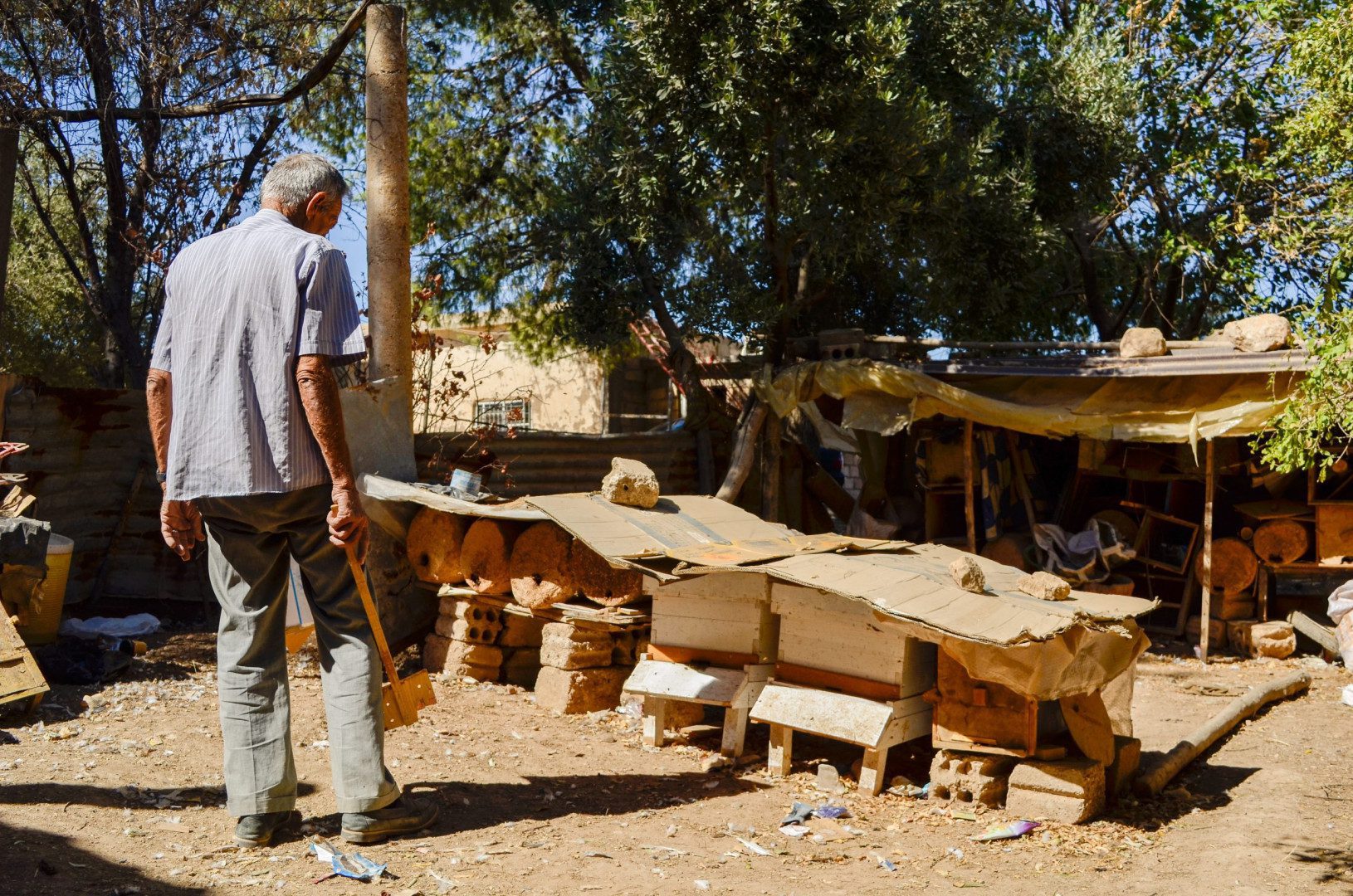
Ahmad Muhammad checks his hives in the village of Himo, 25/9/2022 (Lyse Mauvais/Syria Direct)
Another way to help Syrian bees is to spread knowledge about these insects and train local beekeepers. Some NGOs have launched projects in recent years targeting families in need to give them a new source of income. Muhammad, who has kept bees for 40 years—he learned the trade fromhis father and grandfather—says he greatly benefitted from one of these projects, from which he received several modern hives and protective gear.
But Yousef, who led several trainings under similar projects, says their impact is limited. “These projects target very small numbers of beneficiaries, usually poor families with very little experience of beekeeping. Some develop a real interest and stay in touch with me to ask for advice. But many are simply selling the hives as soon as the project ends, because they need money.”
Those who keep at it enter into an intimate relationship between humans and the natural world, one that stretches back thousands of years. And, watching the daily comings and goings of their small charges, keepers are the first to notice when something isn’t quite right, when external forces start to gnaw at the world within each of their hives.
“There are three ingredients in beekeeping,” Yousef concludes. All three have been shaped by war and drought, a mingling of the human and the natural world. “The bee itself, what it feeds on, and the talent of the beekeeper. All three are equally important.”







